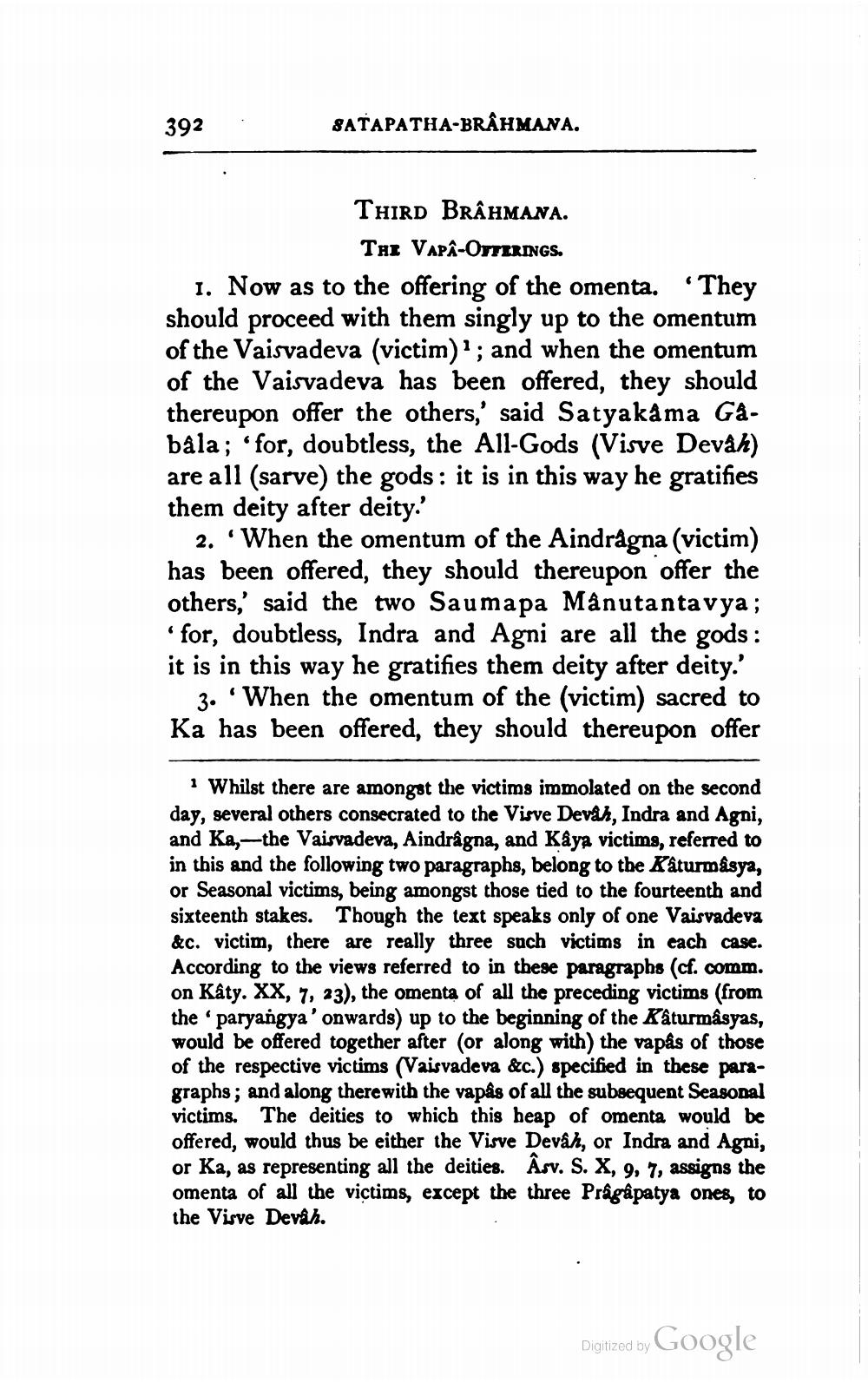________________
392
SATAPATHA-BRAHMANA.
THIRD BRAHMANA.
THE VAPA-OFFERINGS.
1. Now as to the offering of the omenta. 'They should proceed with them singly up to the omentum of the Vaisvadeva (victim); and when the omentum of the Vaisvadeva has been offered, they should thereupon offer the others,' said Satyakâma Gåbâla; 'for, doubtless, the All-Gods (Visve Devâh) are all (sarve) the gods: it is in this way he gratifies them deity after deity.'
2. 'When the omentum of the Aindrâgna (victim) has been offered, they should thereupon offer the others,' said the two Saumapa Mânutantavya; 'for, doubtless, Indra and Agni are all the gods: it is in this way he gratifies them deity after deity.'
C
3. When the omentum of the (victim) sacred to Ka has been offered, they should thereupon offer
1 Whilst there are amongst the victims immolated on the second day, several others consecrated to the Visve Devah, Indra and Agni, and Ka,-the Vaisvadeva, Aindrâgna, and Kâya victims, referred to in this and the following two paragraphs, belong to the Kâturmasya, or Seasonal victims, being amongst those tied to the fourteenth and sixteenth stakes. Though the text speaks only of one Vaisvadeva &c. victim, there are really three such victims in each case. According to the views referred to in these paragraphs (cf. comm. on Kâty. XX, 7, 23), the omenta of all the preceding victims (from the 'paryangya' onwards) up to the beginning of the Kâturmâsyas, would be offered together after (or along with) the vapâs of those of the respective victims (Vaisvadeva &c.) specified in these paragraphs; and along therewith the vapâs of all the subsequent Seasonal victims. The deities to which this heap of omenta would be offered, would thus be either the Visve Devâh, or Indra and Agni, or Ka, as representing all the deities. Arv. S. X, 9, 7, assigns the omenta of all the victims, except the three Prâgâpatya ones, to the Virve Devâh.
Digitized by
Google




